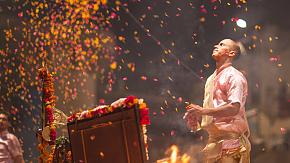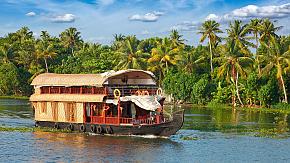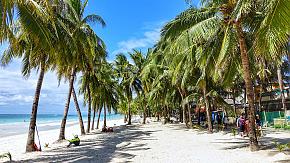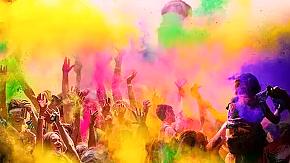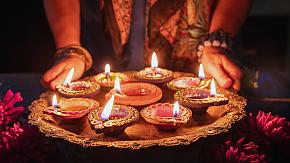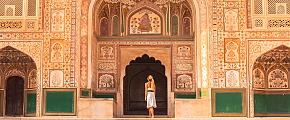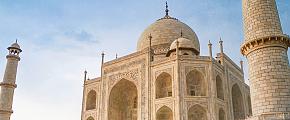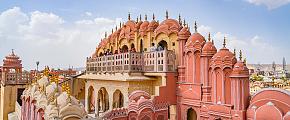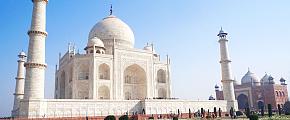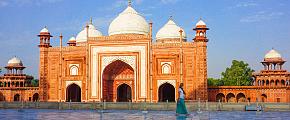North India vs South India: Where Should I Go?
Imagine walking in the Red Fort in North India, and feeling the splendor of the ancient empire. When you turn to South India, the rich aroma of spices and the sound of bells in ancient temples are intertwined. Are you hesitant about where to go in India? This article will reveal the characteristics of North and South India to help you decide on your India vacation.
Quick Facts: North India vs South India
Features
Are you ready to explore India? North India is filled with relics of ancient civilizations. You can walk into the Red Fort in Delhi and touch the walls that have witnessed the rise and fall of empires, and hear the whisper of wind blowing through the window lattices in the Hawa Mahal in Jaipur.
In South India, ancient temples stand among green fields, and the air is filled with the scent of spices. You will get lost in the streets of the ancient city of Kochi and listen to the songs of street performers.
Do you want to follow the footsteps of history, or find natural poems? Follow your heart and you can find your trip to India.
How to Decide Where to Visit in India
North India
- Recommended for First-Timers:
First-timers can visit many classic attractions in North India, experiencing the essence of Indian culture.
- A Romantic Choice for Honeymoons:
Iconic buildings in the North are full of royal luxury and romance, allowing visitors to be immersed in a dreamy atmosphere.
- A Paradise for Adventure Lovers:
Travelers who want to experience excitement can ride camels in the Thar Desert, or go hiking in the Himalayas.
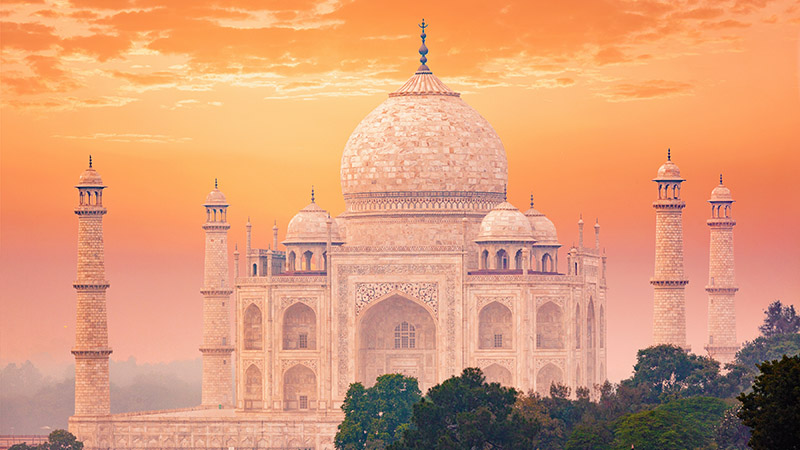 Taj Mahal
Taj Mahal
South India
- An In-Depth Choice for Repeat Visitors:
Travelers who have a preliminary understanding of India can deeply explore local lifestyle and cultural traditions in the south.
- A Place for Cultural and Religious Exploration:
South India is full of heritage and is ideal for gaining a deep understanding of its spiritual culture.
- A Holiday Paradise for Nature Lovers:
For tourists who love nature, Kerala's houseboat cruise, Goa's beaches, and Coornoor's tea plantations will relax your body and mind.
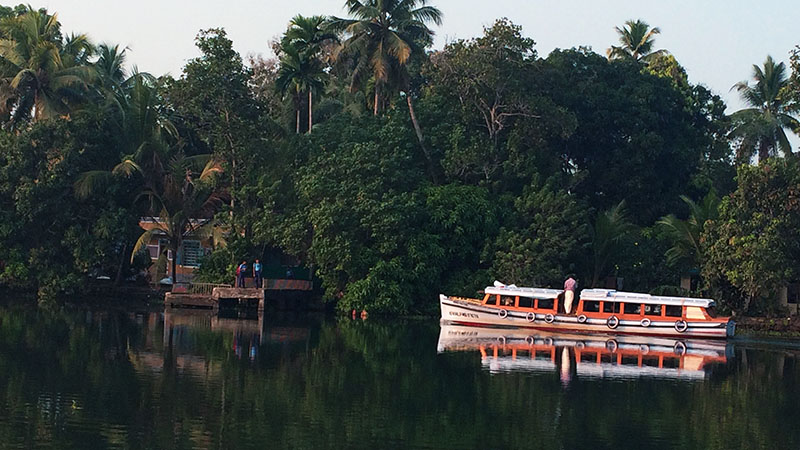 Kerala Backwaters
Kerala Backwaters
Infographic on North India vs South India
With the different cultures, landscapes, and histories of North India and South India, the following chart will help you quickly understand their differences.
| Criteria | North India | South India |
| Best Time to Visit | October to March | December to March |
| Length of Stay | 7 to 14 Days | 7 to 14 Days |
| Landscapes |
- Himalayan Views |
- Tropical Views |
| Main Highlights |
- Shimla: Himalayan Views |
- Mumbai: Gateway of India, Victoria Terminus, Dhobi Ghat |
| Festivals Mainly Celebrated | Diwali, Holi | Ugadi, Onam |
| Food |
- Centered on Wheat |
- Centered on Rice |
| Culture | More Diverse: Hinduism, Islam, Sikhism, etc. | Hinduism Dominates, More Traditional |
| Language | Indo-Aryan Languages Such as Hindi, Punjabi, and Bengali | Dravidian Language Such as Tamil, Malayalam, and Kannada |
| Traditional Attire |
- Women: Salwar Kameez or Churidar |
- Women: Bright Colored Sarees and Half Sarees |
| Extended Destinations | China, Bhutan, Nepal | Sri Lanka, Maldives |
North India vs South India: What to Do & See
North India: A Classic and Adventurous Experience
Visit Forts and Palaces
North India has many classic historical buildings, such as the Taj Mahal and the Amber Fort, where you can experience the glory of the former empire.
Enjoy a Romantic Night in the Desert
Explore Jaisalmer, then you can ride a camel or experience a jeep safari through the golden dunes. At night, sit around a campfire and enjoy a peaceful and romantic desert experience under the stars.
Experience Boat Rides and Sacred Rituals
In Varanasi, one of the most sacred cities in Hinduism, you can take a boat trip to the Ganges River, watch the famous Ganga Aarti (a daily sacred ceremony), and experience spiritual cleansing and peace.
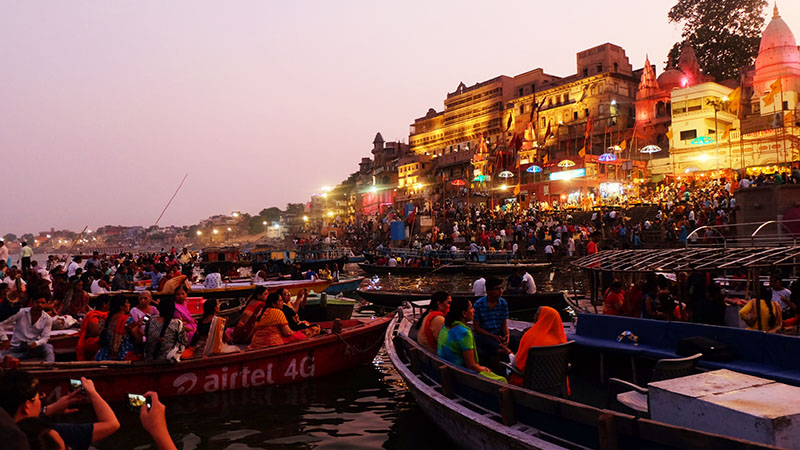 Ganga Aarti Ceremony
Ganga Aarti Ceremony
South India: A Relaxed Journey of Religion and Nature
Visit Temples
Temples such as the Meenakshi Temple in South India have colorful towers and intricate carvings. While admiring exquisite architecture, you can also understand the profound heritage of Hindu culture.
Have a Beach Holiday
Goa's beaches are an ideal place for a vacation, where you can sunbathe, participate in water sports, or enjoy the tranquility and beauty of the sea during a leisurely afternoon tea.
Houseboat Cruise in Kerala Backwaters
A traditional houseboat ride in the backwaters of Kerala is a unique experience where you can enjoy the tranquility of nature, bird watching, and if you have the chance, you can explore the villages and the traditional fishing life of the locals.
Yoga and Meditation
Famous yoga retreats in South India, such as SwaSwara and Sitaram Ayurveda Retreat, offer you the opportunity to unwind and find inner peace through yoga and meditation classes led by professional instructors.
North India vs South India: Best Time to Visit
The best time to visit India is from October to March when the weather is cool and pleasant. Although South India has relatively low humidity during this period, it is still more humid than North India. If you are planning to visit South India, December to March is the recommended time. With warm weather and low humidity, you can enjoy a relaxing time at natural attractions.
If you want to avoid the peak season and get some special experiences, consider going to the Himalayan regions in the north and tea plantations in the south in summer (March to May). Besides, you can explore the waterfalls and rice fields of South India during the monsoon season (June to September). Gaining peace inside and natural beauty with the sound of rain will leave you a deep impression.
North India vs South India: How Long to Stay
India is a vast country, so you can flexibly arrange your trip according to your interests and holidays. The 7-day tour is suitable for a quick experience of India, exploring iconic forts and palaces in the north, or visiting classic temples in the south. The 10-day tour can deeply experience rituals such as the Ganga Aarti along the Ganges in the north, or backwater houseboats and Goa's beaches in the south. The 14-day tour can more comprehensively explore the desert in the north, as well as the urban culture of Mumbai and Kochi in the south.
If you can stay for about 4 weeks, you can plan an in-depth trip from the majestic Himalayas in the north to the tropical beaches in the south, and experience unique travel methods such as taking toy trains through mountains and tea plantations, taking pink city rickshaws shuttling through ancient cities, and exploring tiger safari in the national parks.
North India vs South India: What to Eat
North India
North Indian food is rich and creamy, with wheat as the main staple. Various flatbreads, like Paratha and Tandoori Roti, are often paired with thick curries and stews. Classic dishes include Chicken Tikka Masala (roasted marinated chicken chunks in a spiced sauce), Malai Kofta (crisp fried potato paneer balls dunked in a creamy sauce), and Aloo Gobi (a vegetarian dish made with potatoes and cauliflower).
South India
South Indian food is based on rice and lentils, focusing on the combination of spicy and tropical flavors, often adding coconut to the taste. Staple foods include Dosa and Idli made from fermented rice milk, served with coconut chutney. Besides, Biryani (made with rice, meat, and spices) and Lemon Rice are classic rice dishes.
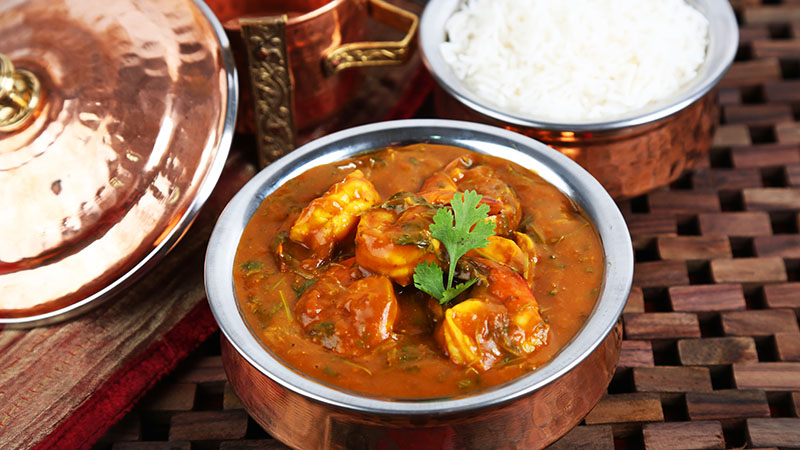 Biryani
Biryani
North India vs South India: Festivals Mainly Celebrated
North India
Holi
Traditional music, dance and desserts make Holi lively. People splash colorful paint on each other, and you can feel the enthusiasm of the North Indian people and immerse yourself in a colorful carnival party.
Diwali
During Diwali, the streets are decorated with lights, fireworks bloom in the night sky, and you can gather with locals to pray, and enjoy rich desserts and food.
South India
Ugadi
Ugadi is usually in late March or Early April, marking the beginning of the South Indian New Year. You'll see fresh mango leaves decorating door frames, symbolizing good luck. On the streets, people dress up to participate in religious ceremonies and listen to traditional music, full of a strong cultural atmosphere.
Onam
Onam, a celebration of harvest and myths and legends, falls in August or September. You can see exquisite floral carpets decorating doorways, spectacular boat races and traditional tiger dances, and a sumptuous Onam Sadhya banquet with dozens of dishes.
North India vs South India: Transportation
India mainly covers roads, railways, aviation, and urban transportation, which can basically meet your travel needs. The road network is extensive, major cities are well connected by highways, the railway system covers the whole country, and domestic flights are frequent. Large cities such as Delhi, Mumbai, and Bangalore have modern subway systems, and taxis and online car-hailing services are also popular.
North India
In North India, Delhi is the aviation and railway hub. Cities such as Varanasi, Amritsar, and Jaipur have important airports, subways and a well-developed train network.
South India
South India has international airports such as Bangalore and Hyderabad, as well as important ports such as Chennai Port and Kochi Port. It has comprehensive railway coverage, beautiful coastal roads, and convenient taxi and online car-hailing services in large cities such as Coimbatore.
Take Your Steps to India With Odynovo
The passion and adventure of North India, or the tranquility and healing of South India, are waiting for you. Don't let hesitation hold you back, contact us or write to [email protected], and we'll offer you a comfortable arrangement and an unforgettable journey.
Related Posts You May Like
What Our Clients Say
Explore the latest verified reviews of Odynovo's travel services on Tripadvisor, Google, Trustpilot, Product Review and more trusted platforms.

